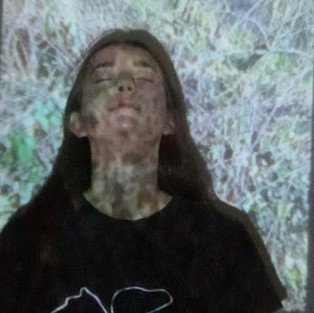FMP Week 6
- Amelie Nicholson
- Mar 5, 2021
- 3 min read
Updated: Mar 16, 2021
I started the week by research the science of fear and wanted to find out why we get scared. I read an article [Newman, 2018] about the biology behind it all and found out that fear is supposed to help survival. When we get scared, our body release hormones that make our muscles tense, give us a blood sugar spike for energy and boost activity in the heart and lungs so we can react faster. Most animals stop moving when they are scared so they can avoid detection while they decide how to react. This links to my topic because an animal's best shot at survival is often concealing itself from the danger, so the physical act of hiding is an important instinct.
I then wanted to expand on last week's research into the hiding of Jewish people during the second world war. I found diary entries of a teenage boy who went into hiding with his family and survived on very basic supplies of bread and cheese. They hid in bushes to meet someone who gave them rare luxuries like newspaper and cigarettes. I found it interesting that normal people were branded as criminals as had to resort to such extremes for so little, just because someone decided to oppress them.
I recognised that any intervention I do in relation to this story cannot replicate the fear and long-term suffering those people dealt with- it would only highlight the difference between hiding for art and hiding for necessity.
After thinking about the few luxuries the Jewish family had, I decided to do some collaborate research and ask people what they would take with them if they went into hiding. I used social media so I could reach a diverse group of people and they responded with a mix of practical and sentimental objects. I also took some photos of some of my own keepsakes and some practical objects that I keep with me most of the time.

^ Collaborative research results

^ My own sentimental/practical objects
Thinking about how the family had to hide in a bush to get supplies, I decided to gather my own imagery by projecting my photos of the woods onto myself. I liked how the projections covered my face to partially camouflage me. I looked at Tony Oursler's recent work and was inspired to use more detailed, vibrant images, which I could perhaps achieve when i have access to a professional projector.

^ 'Black Box' (2021), Tony Oursler
After looking at Adrian Ghenie's work, which focuses on Europe's violent past, I was inspired to make paintings with large, grotesque brushstrokes. I painted a portrait of the Jewish woman from last week's research and one of myself from the projections. I decided to add charcoal into the second one and was inspired by Emanuele Tozzolli, who keeps small details in his more abstract work. I like the textures I have created by layering the paint and would like to use this technique in future paintings.
^ My portrait paintings

^ 'Self-Portrait in 1945' (2015), Adrian Ghenie

^ Screenshot from Emanuele Tozzolli's instagram page
I then photocopied and cut up the portraits and made a collage of objects from my collaborative research. I especially like the teddy bear because the shadows and highlights work well. I would have liked to have worked on a bigger scale, but I can only photocopy up to A4 from home so I will create bigger collages when I have access to the studio. My colour palette and mix of perspectives were inspired by Romare Bearden, who creates collages with a clear narrative.

^ Collage made from my portraits

^ 'Black Venus' (1968), Romare Bearden
I photocopied my collage, ripped it up and rearranged the pieces so that the objects were almost unrecognisable. I wanted to show that the possessions were a secret and had to be concealed (like how the family from my research hid their things to avoid detection).
^ My rearranged collage
Following on from my research into Winkowski's work from last week, I wanted to animate my collage. I made a stop-motion animation of the collage being ripped up and flying away, as if it is a secret that must escape before it is seen. I think the results are very effective and I might try and animate singular elements of a collage in future.





























Comments